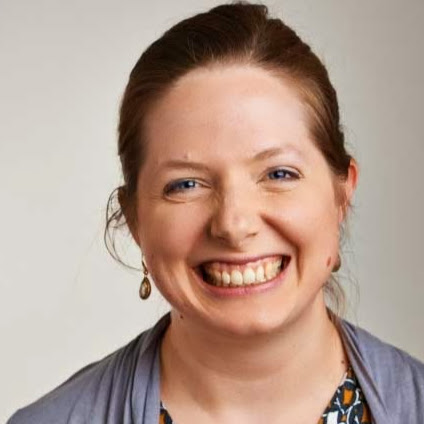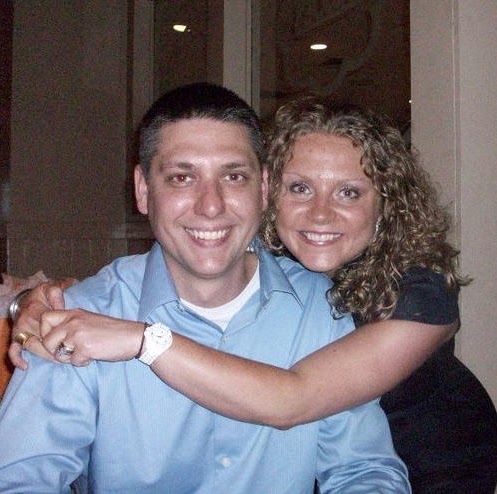Jennifer L Schumacher
age ~52
from Welch, MN
- Also known as:
-
- Jenny L Schumacher
- Jennifer L Root
- Jason J Schumacher
- Phone and address:
-
29379 Vasa Trl, Etter, MN 55089
6512584687
Jennifer Schumacher Phones & Addresses
- 29379 Vasa Trl, Welch, MN 55089 • 6512584687
- 7525 165Th St E, Hastings, MN 55033
- 34181 180Th Ave, Red Wing, MN 55066
- Saint Cloud, MN
Us Patents
-
Image Based Novelty Detection Of Material Samples
view source -
US Patent:20210327041, Oct 21, 2021
-
Filed:Jun 26, 2019
-
Appl. No.:17/247773
-
Inventors:- St. Paul MN, US
Jennifer F. Schumacher - Woodbury MN, US
Muhammad Jamal Afridi - Woodbury MN, US
Himanshu Nayar - St. Paul MN, US
Golshan Golnari - Maple Grove MN, US -
International Classification:G06T 7/00
G06K 9/62
G06K 9/46
G06N 3/02
G06N 20/10 -
Abstract:Systems and methods for detecting/identifying novel material samples are provided. A test sample image is processed with a trained transformation function to obtain a transformed matrix. A measure of similarity of the test image based on the transformed matrix is compared to a threshold to determine whether the test sample is novel to a batch of material samples that are provided to train the transformation function.
-
Suppressing Thermally Induced Voltages For Verifying Structural Integrity Of Materials
view source -
US Patent:20210293736, Sep 23, 2021
-
Filed:Jun 9, 2021
-
Appl. No.:17/303867
-
Inventors:- St. Paul MN, US
Christopher R. Yungers - Saint Paul MN, US
Jennifer F. Schumacher - Woodbury MN, US -
International Classification:G01N 27/20
G01N 33/38 -
Abstract:The disclosure describes techniques for detecting a crack or defect in a material. The technique may include applying an electrical signal to a first electrode pair electrically coupled to the material. The technique also may include, while applying the electrical signal to the first electrode pair, determining a measured voltage between a second, different electrode pair. At least one electrode of the second, different electrode pair is electrically coupled to the material. The technique may further include determining a corrected measured voltage by suppressing a thermally induced voltage from the measured voltage and determining whether the material includes a crack or other defect based on the corrected measured voltage.
-
Electrode Placement For Verifying Structural Intergrity Of Materials
view source -
US Patent:20210208094, Jul 8, 2021
-
Filed:Mar 24, 2021
-
Appl. No.:17/301082
-
Inventors:- St. Paul MN, US
Christopher R. Yungers - Saint Paul MN, US
Eric M. Chinnock - Chanhassen MN, US
Jennifer F. Schumacher - Woodbury MN, US -
International Classification:G01N 27/20
G01N 27/04 -
Abstract:A technique may include applying a first electrical signal to a first pair of drive electrodes, and, while applying the first electrical signal to the first pair of drive electrodes, determining a first measured voltage using a first measurement electrode. The technique further may include applying a second electrical signal to a second pair of drive electrodes, and, while applying the second electrical signal to the second pair of drive electrodes, determining a second measured voltage using a second, different measurement electrode. The first pair of drive electrodes, the second pair of drive electrodes, the first measurement electrode, and the second, different measurement electrode may from a set of N electrodes electrically coupled to the material. The technique also may include determining whether the material includes a crack or other defect based on a comparison between the first measured voltage and the second measured voltage.
-
Compliance Metrics For Offender Monitoring Devices
view source -
US Patent:20210104142, Apr 8, 2021
-
Filed:Mar 29, 2018
-
Appl. No.:16/603256
-
Inventors:- Tel Aviv, IL
Nicholas Andrew ASENDORF - St. Paul MN, US
Deepti PACHAURI - St. Paul MN, US
Gautam SINGH - St, Paul MN, US
Guruprasad SOMASUNDARAM - Minneapolis MN, US
Jennifer Frances SCHUMACHER - Woodbury MN, US
Nitsan BEN-GAL NGUYEN - St. Paul MN, US
Robert W. SHANNON - Roseville MN, US
Saber TAGHVAE EVAN - St, Paul MN, US
Arash SANGARI - St. Paul MN, US
Himanshu NAYAR - St. Paul MN, US
Mojtaba Kadkhodaie ELYADERANI - St, Paul MN, US
James Bevan SNYDER - St, Paul MN, US
James William HOWARD - St. Paul MN, US
David Solomon SEGAL - St. Paul MN, US -
International Classification:G08B 21/02
-
Abstract:Example techniques of this disclosure are directed determining one or more values that represent a monitoring attribute for one or more body-worn tracking devices (BWTDs). In some instances, the techniques include determining a compliance metric that represents a level of compliance for at least one offender. That is, the compliance metric may be a quantitative value that represents whether a user wearing BWTD is complying with established rules or desired behaviors.
-
Characterizing Monitoring Attributes For Offender Monitoring
view source -
US Patent:20210104143, Apr 8, 2021
-
Filed:Mar 29, 2018
-
Appl. No.:16/603258
-
Inventors:- Tel Aviv, IL
Deepti PACHAURI - St. Paul MN, US
Guru prasad SOM AS U N DA RAM - Minneapolis MI, US
Jennifer Frances SCHUMACHER - Woodbury MN, US
Nitsan BEN-GAL NGUYEN - St. Paul MN, US
Robert W. SHANNON - Roseville MN, US
Saber TAGHVAE EVAN - St, Paul MN, US
Arash SANGARI - St. Paul MN, US
Himanshu NAYAR - St. Paul MN, US
Mojtaba Kad khodaie ELYADERANI - St, Paul MN, US
James Sevan SNYDER - St, Paul MN, US
James William HOWARD - St, Paul MN, US
David SEGAL - St. Paul MN, US -
International Classification:G08B 21/02
G06T 11/00
G08B 7/06 -
Abstract:In an example, a system comprises at least one body-worn tracking device (BWTD) configured to transmit location data that indicates a location of the BWTD and a computing system configured to communicate with the at least one BWTD. The computing system is configured to receive the location data from the at least one BWTD, determine, based on a set of weighted filters associated with at least one monitoring attribute, at least one gradient value corresponding to the location data, where the at least one gradient value represents a level of the at least one monitoring attribute, and perform at least one operation based on the at least one gradient value.
-
Activity Recognition Using Accelerometer Data
view source -
US Patent:20210085221, Mar 25, 2021
-
Filed:Dec 8, 2020
-
Appl. No.:17/247343
-
Inventors:- St. Paul MN, US
James W. Howard - Circle Pines MN, US
Richard J. Moore - Maplewood MN, US
Jennifer F. Schumacher - Woodbury MN, US
Brian J. Stankiewicz - Mahtomedi MN, US -
International Classification:A61B 5/11
A61B 5/00 -
Abstract:A device for recognizing activity of an object. The device comprises a housing configured to be attached to the object and a processing unit disposed in the housing comprising a processor and a movement sensor. The movement sensor measures a signal related to movement of the object during a time window. The processor assigns at least one preliminary activity label to the time window based on at least one numerical descriptor computed from the signal. The processor then determines whether to perform additional analysis dependent upon at least the preliminary activity label. The processor then assigns a final activity label to the time window.
-
Image Based Counterfeit Detection
view source -
US Patent:20200364513, Nov 19, 2020
-
Filed:Nov 15, 2018
-
Appl. No.:16/766118
-
Inventors:- St. Paul MN, US
Jennifer F. Schumacher - Woodbury MN, US
Robert D. Lorentz - North Oaks MN, US
James B. Snyder - Minneapolis MN, US
Golshan Golnari - Maple Grove MN, US
Muhammad Jamal Afridi - Woodbury MN, US -
International Classification:G06K 9/62
G06T 7/73
G06K 9/46
G06T 7/00
G06F 16/55
G06F 16/56
G06F 16/53
G06N 20/00
G06N 5/04 -
Abstract:Systems and methods for authenticating material samples are provided. Digital images of the samples are processed to extract computer-vision features, which are used to train a classification algorithm along with location and optional time information. The extracted features/information of a test sample are evaluated by the trained classification algorithm to identify the test sample. The results of the evaluation are used to track and locate counterfeits or authentic products.
-
System And Method For Anomaly Detection In An Electrical Network
view source -
US Patent:20200256910, Aug 13, 2020
-
Filed:Oct 31, 2018
-
Appl. No.:16/647539
-
Inventors:- St Paul MN, US
Jennifer F. Schumacher - Woodbury MN, US -
International Classification:G01R 31/08
-
Abstract:The present subject matter enables early or real-time detection of anomalies in electric networks. In various applications, the system detects anomalies, such as electricity theft, electricity surge, etc. It solves the difficult-to-detect problems in an electrical network, where anomalies like electricity theft or electrical surge may not be found until it has raised numerous concerns or complaints, or has created a significant impact on infrastructure functionality, service quality, or cost. In addition, the present subject matter decreases the requirement for large number of sensors and provides more cost effective and scalable solutions. The present subject matter provides a method for determining where a detected anomaly is occurring within an electrical network. Variations of the present subject matter include anomaly identification systems for addressing anomalies in large networks. Various applications of the present subject matter provide guidance or effective placement of sensors in the electrical network.
Resumes

Jennifer Schumacher
view source
Jennifer Schumacher
view source
Jennifer Schumacher
view sourceIndustry:
Arts And Crafts

Jennifer Rodriguez Schumacher
view source
Jennifer Schumacher
view source
Jennifer J Schumacher
view source
Owner And Operator Equestrian Operation
view sourceSkills:
Microsoft Office

Jennifer Schumacher
view sourceLocation:
United States
Medicine Doctors

Jennifer E. Schumacher
view sourceSpecialties:
Optometry
Work:
Altru Health SystemAltru Health System Main Clinic
1000 S Columbia Rd, Grand Forks, ND 58201
7017806000 (phone), 7017804392 (fax)
1000 S Columbia Rd, Grand Forks, ND 58201
7017806000 (phone), 7017804392 (fax)
Languages:
English
Description:
Dr. Schumacher works in Grand Forks, ND and specializes in Optometry. Dr. Schumacher is affiliated with Altru Hospital.

Jennifer A. Schumacher
view sourceSpecialties:
Infectious Disease
Work:
SUNY Upstate Medical Center INF
725 Irving Ave STE 311, Syracuse, NY 13210
3154649360 (phone), 3154649361 (fax)
University Hospital Infectious Diseases
725 Irving Ave STE 311, Syracuse, NY 13210
3154649360 (phone), 3154645579 (fax)
725 Irving Ave STE 311, Syracuse, NY 13210
3154649360 (phone), 3154649361 (fax)
University Hospital Infectious Diseases
725 Irving Ave STE 311, Syracuse, NY 13210
3154649360 (phone), 3154645579 (fax)
Languages:
English
Description:
Ms. Schumacher works in Syracuse, NY and 1 other location and specializes in Infectious Disease. Ms. Schumacher is affiliated with Crouse Hospital, Syracuse VA Medical Center and Upstate University Hospital.
Classmates

Jennifer Barron (Schumac...
view sourceSchools:
McCluer Seinor High St. Louis MO 1968-1972
Community:
Greg Tarrant, Diana Harrison, Maureen Mirth, Christine Naes
Biography:
Life
Here's to all of us that have survived.
May we never; have wrinkles, be bore...

Jennifer Grant (Schumacher)
view sourceSchools:
Almont High School Almont MI 1995-1999
Community:
Clarence Trott, Norma Matamoros

Jennifer Singleton (Schum...
view sourceSchools:
Cherry Hill Elementary School Orem UT 1987-1989, James E. Moss Elementary School Salt Lake City UT 1989-1991, Bonneville Junior High School Salt Lake City UT 1992-1994
Community:
Jeff Thornton, Carla Renak

Jennifer Schumacher
view sourceSchools:
Edgeley High School Edgeley ND 1993-1997
Community:
Kim Heim, Lona Thull, Kay Rupp

Jennifer Schumacher
view sourceSchools:
Saint Jude the Apostle School Atlanta GA 1975-1981
Community:
Harriet Corbett, Carlton Byrd, Sharron Royalty, Brian Talbott

Jennifer Schumacher (Hess)
view sourceSchools:
Lovett School Atlanta GA 1989-1993
Community:
Jory Cannon, Joanne Martin

Jennifer Schumacher (Klep...
view sourceSchools:
Napoleon High School Napoleon ND 1975-1979

Jennifer Walker (Schumach...
view sourceSchools:
Mercy Cross High School Biloxi MS 1981-1985
Community:
Gerald Bryant, Margaret Waters, Pamela Mcinnis
Youtube
Flickr
Plaxo

Jennifer Schumacher
view sourcePhoenix, AZ

Jennifer Schumacher
view source
Jennifer Schumacher
view sourceCharlotte, NC

Jennifer Schumacher Vinyard
view source
Jennifer Schumacher Phill...
view source
Jennifer Lollobrigido Sch...
view source
Jennifer Schumacher Lahti
view source
Jennifer Schumacher
view source
Jennifer Leadens Schumacher
view source
Jennifer DeWard Schumacher
view source
Jennifer Schumacher Walker
view sourceMyspace
Googleplus

Jennifer Schumacher
Work:
WillPower Productions - Vice President
Peak Pilates
YMCA
Peak Pilates
YMCA

Jennifer Schumacher
Work:
Eatery daily newspaper - Editor

Jennifer Schumacher

Jennifer Schumacher

Jennifer Schumacher

Jennifer Schumacher

Jennifer Schumacher

Jennifer Schumacher
Get Report for Jennifer L Schumacher from Welch, MN, age ~52













